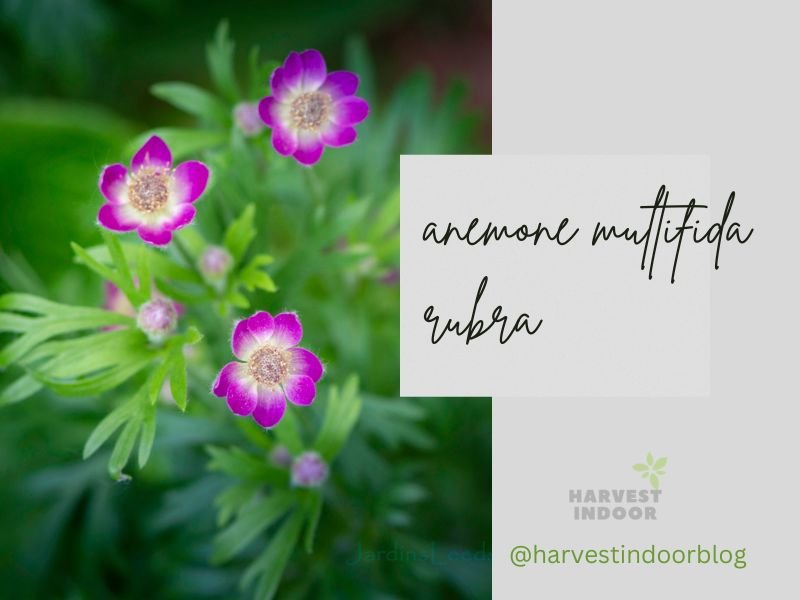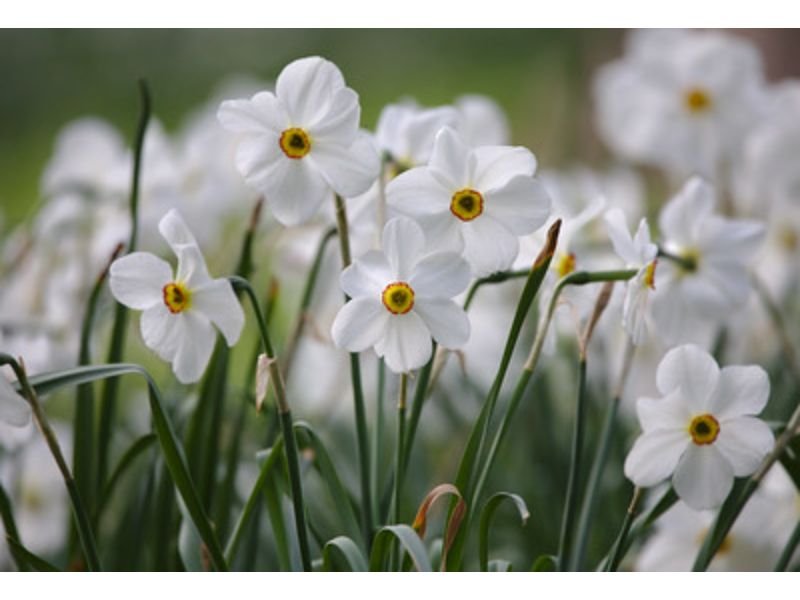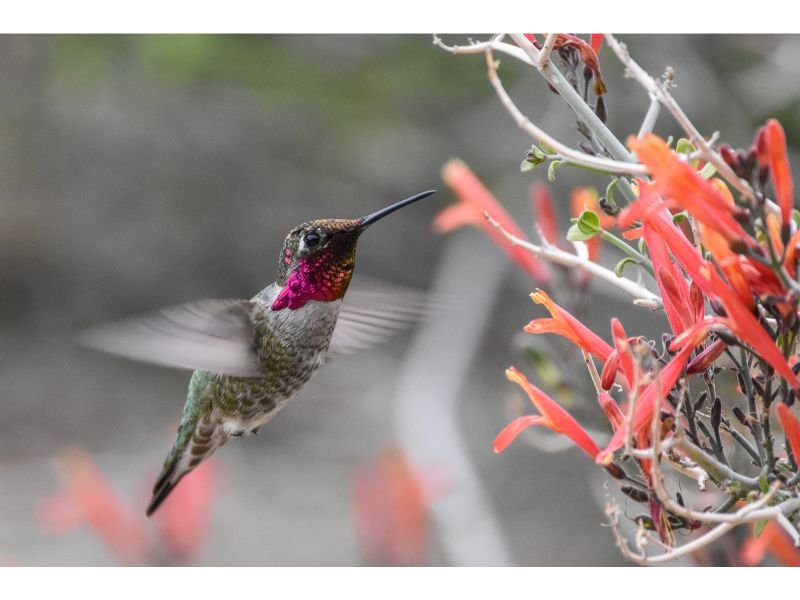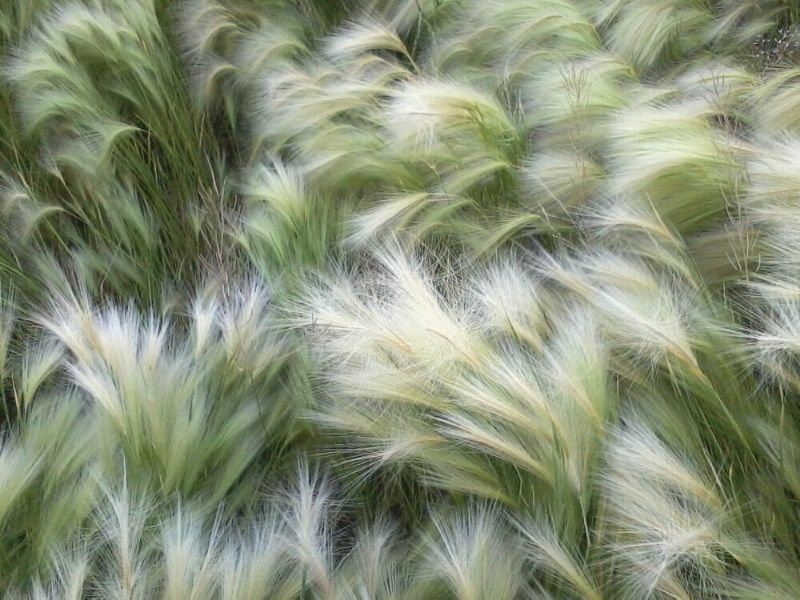Perhaps we could agree that anemone multifida rubra is a flowering plant with undeniable beauty. Little did you know, providing the right care for this unique species of anemone requires knowledge, attention, and lots of patience. For gardeners that are willing to put in some effort, this section is definitely made for you! Here are all you need to know about anemone multifida and some fun facts that make them even more charming.

Table of Contents
Anemone Multifida Rubra Botanical Facts
Common Name(s): Cut-leaved anemone, Pacific anemone, anemone rubra, cut-leaved windflower, red windflower
Scientific Name: Anemone multifida var. rubra
Family: Ranunculaceae
Plant Type: Herbaceous perennial
Country of Origin: North America
Natural Habitat: Mountain meadows, rocky slopes, grasslands
Size: Approximately 8 to 20 inches (20 to 50 centimeters) tall and 20 to 24 inches (50 to 60 centimeters) wide
Toxicity Level: Mildly poisonous only if large quantities are eaten
Color(s): Deep maroon, ruby red, dark magenta, dark pinkish-purple, white, yellow
What Are The Plus Points Of Growing Anemone Multifida Rubra?

Several plus points about anemone multifida make them hard to resist, outside of their ease of maintenance. Yes, the first one is their striking appearance! Known for their bold red and dark pink to deep purple hues, anemone multifida rubra surely can add a splash of color to your garden bed. Apparently, it’s not only the blooms that are eye-catching. This plant also features a unique foliage shape that we will discuss further in the next section below. And if that’s not enough, anemone rubra is also easy to propagate from seeds or division!
Foliage and Blooms Appearance
The leaves of anemone multifida rubra are deeply lobed, sharp-pointed, and arranged in a palmate pattern. They typically are medium green to dark green, but depending on the lights, they can sometimes have a grayish tinge. The flowers of anemone multifida are rather compact in size, cup-shaped, and with 5 to 8 petals on each. The center of every single flower has a cluster of yellow stamens or pistils, surrounded by a white hue. Anemone rubra usually blooms in the late spring or early summer.
Is Anemone Multifida Edible?
Unfortunately, anemone multifida rubra is a poisonous flowering plant and is not meant to be eaten. All parts of this wildflower are toxic if ingested, moreover in large quantities, due to the presence of ranunculin and protoanemonin. It’s best to avoid consuming any plant you are not certain is safe to eat.
Size and Growth
Anemone multifida would likely stay compact for its entire life, with a mounding growth habit and moderate growth rate. Identical to their anemone cousins, this plant can be grown in a broad range of hardiness zones, ranging from zones 3 to as far as zones 8.
Does Anemone Rubra Have Any Fragrance?
As a treasure to the world of plants, anemone multifida rubra does not have any particular or noticeable fragrance. The primary appeal of this perennial wildflower is its stunning blooms and unique foliage shape.
Where Are The Best Places To Grow Anemone Rubra?
Due to their natural habitat, it’s safe to say that anemone multifida rubra is going to be your best bet if you’re a fan of rock-garden themes. Their compact size also makes them an ideal flowering plant for borders, edging, and containers. For those who love woodland-style gardens, anemone multifida can be a great companion plant among any other shade-loving plants.
The Complete Anemone Multifida Rubra Care Guide

Light
Full to partial sun exposure is what the anemone multifida needs. Generally, they require at least a daily of 4 to 6 hours of light to thrive and maintain their vibrant blooms. In areas with hot summer climates and intense afternoon sun, they can tolerate partial or deep shade. Meanwhile, for gardeners who live in cooler climates, it’s safe to give the plant more direct sun exposure.
Watering
As a meadow wildflower, anemone multifida rubra has adapted to mild drought conditions, although it’s best to keep them consistently moist with infrequent deep watering. Never over-water the plant as this can lead to root rot, so give the plant water at least once or twice a week, depending on your climate, location, and soil type. About 2 to 3 inches (2.5 to 7 centimeters) of watering is typically enough for the plant.
Temperature and Humidity
Anemone multifida rubra is best to stick with cooler temperatures and moderate humidity levels. They grow the best in temperatures that range from 55°F (12°C) to 65°F (18°C). They typically experience cold winters and mild to cool summers, after all. In terms of humidity, avoid very humid conditions as the plant might be more susceptible to fungal growth.
Soil
For anemone rubra, nothing can beat a well-draining and humus-rich soil. They can, however, tolerate a range of soil types but are more suitable to grow in slightly acidic to neutral soil. To level up your gardening game, adding a layer of mulch around the base soil of anemone multifida rubra can help to retain moisture and prevent weed growth. But as is the same with watering, avoid adding too much mulch as this can hurt the plant by making them more susceptible to root rot.
Fertilizing
Despite being naturally not a heavy feeder, anemone multifida rubra still take advantage of occasional fertilizing to promote healthy growth and more radiant blooms. Fertilizing should only be done during the growing season, precisely in the spring and summer when the plant is actively growing. To prevent excessive growth, fertilize the plant only once every 4 to 6 weeks with equal amounts of the basic nitrogen, phosphorus, and potassium.
Pruning and Repotting
Thanks to their compact size, generally, anemone multifida rubra does not need much pruning. Yet, removing all the spent blooms, foliage, and stems still can encourage more flowering, and prevent further infection if the plant ever gets diseased. This pruning regime should only be done after the growing phase has passed. If repotting is necessary, gently remove anemone rubra from their container, carefully loosen the roots, and place them in a new, one or two-times bigger pot with well-draining soil that is high in organic matter.
Propagation
The recommended propagation method for anemone multifida rubra is through seedlings. Scatter the seeds over a prepared gardening bed with moist, well-draining soil, and lightly cover with a layer of compost. Keep the soil consistently moist and maintain a cool temperature of 60°F to 65°F (15°C to 18°C) to allow germination, which could take anywhere between 2 to 4 weeks. Once you see a new sprout, transplant them into individual pots or a new, prepared gardening bed.
Be Aware: The Most Common Anemone Multifida Problems
Anemone multifida rubra is a somewhat disease-resistant flowering plant, but problems such as caterpillars, slugs, and aphids can occasionally be a problem. These tiny burglars can be treated and controlled through manual removal, neem oil, insecticidal soap, and any other natural method. Fungal diseases such as rust can be treated with a fungicide. For man error-related problems, like overwatering and over-fertilizing, can be treated by providing the plant with the best growing requirements as possible.
Anemone Mythology: What Does Anemone Multifida Rubra Signify?
Flowers and mythology are two inseparable things. When it comes to anemone multifida, it’s believed that their red blooms sprung from the blood of Adonis, who was the lover of Aphrodite, the Goddess of beauty and desire. On another version, anemone rubra is also associated with Christianity, where their red hue is said to be the symbolism of Christ’s blood and sacrifice.
Final Thoughts: So What Are The Pros and Cons Of Growing Anemone Multifida Rubra?
Just like many things in this world, growing anemone multifida rubra has it’s own good and bad. The main pros of thriving anemone rubra are, without any doubt, their easy maintenance and spectacular showy blooms and split foliage. This plant also doesn’t require much pruning and repotting, which can save a lot of your time. Although it might not be a problem for some, the cons about anemone rubra are that they’re a poisonous plant and can’t stand the heat and prolonged drought–which can be challenging for gardeners who live in zones 9 and up to grow these tiny gems.

New author in the hood. Loves gardening and flowers are my spirit animals (yes I know they are not animals but I insist). I will be covering most of the flowers’ topics here and occasionally random though as well.






